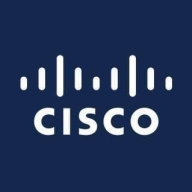

iBwave Unity and Cisco Modeling Labs compete in network modeling and design. Cisco Modeling Labs tends to have the upper hand due to its advanced feature set, despite being pricier.
Features: iBwave Unity offers tools for detailed wireless network design, enhancing collaboration and accuracy. Its features focus on network documentation and ease of use. Cisco Modeling Labs provides comprehensive network simulation, enabling complex testing scenarios and virtual network configurations, with a focus on simulation and virtualization.
Ease of Deployment and Customer Service: iBwave Unity has a straightforward deployment process and integrates easily into existing workflows, backed by solid support. Cisco Modeling Labs may have a more complex deployment due to its extensive simulation capabilities but offers strong support to guide users.
Pricing and ROI: iBwave Unity is cost-effective, providing a good ROI with lower setup costs. In contrast, Cisco Modeling Labs is more expensive but offers potential returns through advanced simulation, making it valuable for those needing its capabilities.
| Product | Market Share (%) |
|---|---|
| iBwave Unity | 8.1% |
| Cisco Modeling Labs (CML) | 11.2% |
| Other | 80.7% |

| Company Size | Count |
|---|---|
| Small Business | 10 |
| Midsize Enterprise | 2 |
| Large Enterprise | 3 |
Cisco Modeling Labs (CML) offers an efficient, scalable way to design, simulate, and visualize network configurations. This tool is essential for enterprises looking to enhance network performance through accurate modeling and testing.
Cisco Modeling Labs provides virtual network simulation, allowing users to emulate real-world scenarios. It supports a wide range of Cisco devices and integrates seamlessly with existing systems. Users can model complex network behaviors, which is ideal for testing configurations before deployment. CML delivers a robust environment that minimizes risks associated with network changes.
What are the most important features of Cisco Modeling Labs?CML is implemented widely in industries such as telecommunications, finance, and education, where network reliability and innovation are paramount. Companies leverage this tool to refine network topologies and train staff in a secure, virtual setting, ensuring a high return on investment through careful risk management and performance optimization.
iBwave Unity leverages a new UI for improved navigation with powerful 3D imaging. It enhances venue designs through detailed modeling and efficient project management, making it essential for accurate propagation studies.
iBwave Unity provides innovative modeling, focusing on improving propagation studies with realistic venue design. Key features like heatmap generation, multi-floor mapping, and signal coverage prediction deliver superior results. Its AutoCAD import and automatic calculations streamline processes, complemented by a comprehensive object database for efficient project management. While processing speed enhancements and additional RF prediction materials are desired, current features are robust in supporting large-scale deployments.
What are the key features of iBwave Unity?iBwave Unity is implemented across industries focusing on indoor network designs, facilitating WiFi, DAS, and ERRCS solutions in large facilities like malls, hotels, and business centers. These organizations rely on predictive RF heatmaps to enhance cellular and WiFi coverage, enabling design validation prior to site surveys.
We monitor all Network Modeling and Simulation reviews to prevent fraudulent reviews and keep review quality high. We do not post reviews by company employees or direct competitors. We validate each review for authenticity via cross-reference with LinkedIn, and personal follow-up with the reviewer when necessary.